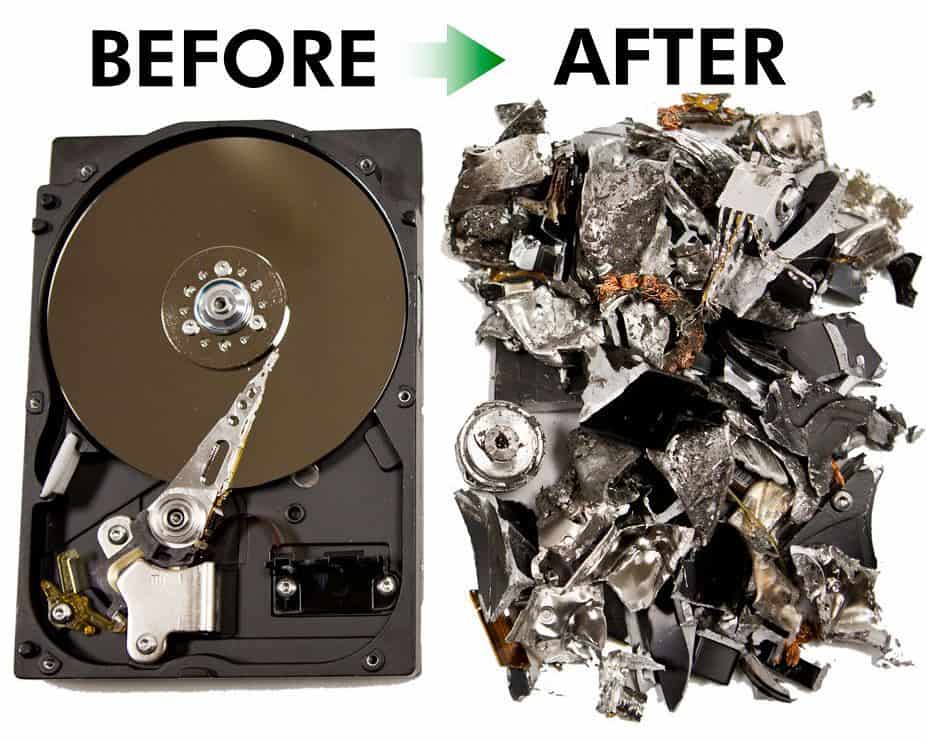The Relevance of Effective Information Destruction Practices in Safeguarding Sensitive Details and Ensuring Computer System Safety And Security
In a period where information breaches are significantly usual, the significance of efficient information destruction methods can not be overemphasized. Organizations face significant dangers when delicate details is inadequately taken care of, potentially leading to unapproved accessibility and severe economic repercussions. Applying robust information damage techniques not only reduces these threats but also lines up with lawful compliance demands, guaranteeing that organizations support their reputation and foster customer trust fund. However, the question stays: what details techniques can be employed to improve these methods, and how can companies properly incorporate them right into their overall cybersecurity framework?
Recognizing Information Damage
Understanding information damage is vital in today's digital landscape, where sensitive details can conveniently be jeopardized. Effective data devastation involves not merely making sure however erasing data that data is irretrievable via thorough techniques. This process is essential for companies that deal with confidential customer details, copyright, or internal records, as any kind of violation can result in serious monetary and reputational repercussions.
Data damage incorporates various techniques, consisting of shredding physical media, degaussing magnetic storage devices, and utilizing software-based options that overwrite data multiple times. Each approach offers a specific objective and has to straighten with the level of sensitivity of the info being thrown away. Physical destruction is typically chosen for difficult drives consisting of extremely personal information, while software program approaches could be adequate for much less delicate details.
In addition, sticking to sector criteria and guidelines, such as the General Information Defense Regulation (GDPR) or the Health And Wellness Insurance Policy Portability and Responsibility Act (HIPAA), is vital for conformity and to minimize legal dangers. Organizations needs to develop a robust information damage plan, train employees on ideal methods, and consistently investigate their procedures to ensure that all delicate info is dealt with firmly and effectively.
Threats of Inadequate Practices
Insufficient data devastation methods expose companies to significant threats that can have far-ranging repercussions. When sensitive details is not appropriately thrown away, it stays vulnerable to unapproved accessibility, which can cause data breaches and identity burglary. Such incidents not just endanger the safety of people yet likewise tarnish the organization's online reputation, leading to a loss of customer depend on and potential economic consequences.
Moreover, regulatory conformity is progressively strict in many markets. Failing to follow information damage policies can cause significant penalties and lawful activities against companies. These fines can divert and strain monetary sources attention from core service procedures.
In addition, the abuse of residual data can lead to copyright theft or corporate reconnaissance, jeopardizing affordable advantages (data destruction). The effect of poor data devastation extends past immediate monetary losses; it can additionally lead to lasting damage to brand stability and market placement

Organizations need to recognize that information safety is not only concerning stopping violations; it also encompasses the responsible management of data throughout its lifecycle. Overlooking efficient data damage procedures can have devastating effects, emphasizing the need for durable actions to minimize these risks.
Best Practices for Data Destruction
Executing efficient data destruction techniques is important for securing delicate info and keeping conformity with governing criteria. Organizations needs to take on a multi-faceted strategy to guarantee that information is irretrievable, thereby avoiding unapproved gain access to and potential violations.
First, information must be classified based upon sensitivity, enabling organizations to use appropriate destruction methods tailored to the degree of risk. For electronic data, making use of software-based data-wiping tools that follow sector standards can effectively overwrite existing data. Physical destruction methods, such as shredding or degaussing, are crucial for devices that save delicate info, making sure total removal.
Developing a clear information retention policy is essential, outlining how much time different kinds of info must be maintained before devastation. Normal audits of data storage systems are also necessary to recognize obsolete or unneeded information needing removal.
In addition, training workers on the value of information destruction and the details protocols to adhere to fosters a culture of protection within the organization. Preserving documentation of data devastation processes supplies responsibility and supports compliance with external guidelines and inner plans. By sticking to these best methods, companies can substantially alleviate the threats related to data direct exposure.
Legal and Compliance Considerations

Failure to follow these laws can lead to severe charges, consisting of substantial penalties and reputational damages. Organizations should apply a robust information damage plan that lines up with these legal frameworks and provides clear standards on the proper approaches of data disposal, whether physical shredding or electronic cleaning.
Furthermore, maintaining paperwork of information damage tasks is essential for demonstrating conformity throughout audits or evaluations. By focusing on legal and compliance factors to consider, companies can improve their information safety stance and foster count on with stakeholders and clients, inevitably adding to a more protected information monitoring environment.
Benefits of Effective Data Devastation
Effective information destruction techniques extend past you could check here mere conformity; they use significant advantages to organizations that prioritize them. By making sure that delicate information is irretrievably ruined, organizations alleviate the danger of data breaches and the prospective monetary consequences connected with them. This aggressive approach not only safeguards against unauthorized gain access to yet also enhances the general reliability of the organization in the eyes of stakeholders and customers.
Implementing robust information devastation approaches, such as physical destruction of storage gadgets or innovative information cleaning strategies, adds to the fortifying of a company's cybersecurity stance. data destruction. It reduces the possibility of copyright theft and shields exclusive details, thereby maintaining an one-upmanship in the marketplace
Conclusion
In conclusion, effective information devastation techniques are essential for guarding delicate info and improving general computer safety and security. Ultimately, a commitment to robust information devastation methods promotes a society of responsibility, consequently enhancing an organization's cybersecurity stance and preserving client trust.
